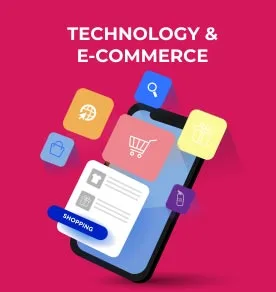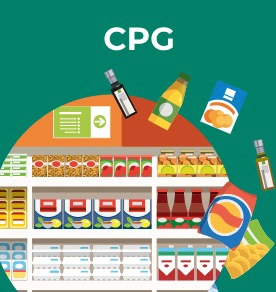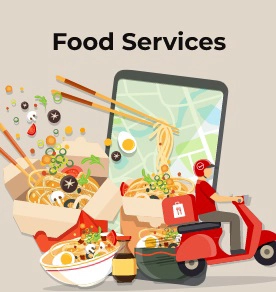The Evolution of Beauty Commerce: Personalization, Omnichannel Strategies and the Power of Consumer Trust

In this fast-evolving landscape, what defines success is not just product innovation, but the ability to create deeply personal and trust-filled relationships with consumers—both online and offline.
By Vaishnavi Gupta, Associate Editor
Jun 03, 2025 / 13 MIN READ
The beauty and personal care industry in India is undergoing a transformational shift, driven by a growing focus on personalization, omnichannel presence, digital acceleration, and the rising influence of quick commerce. As traditional brands adapt to a new-age consumer, digital-native brands are also rewriting playbooks with fresh storytelling, authentic content, and data-driven experimentation.
In this fast-evolving landscape, what defines success is not just product innovation, but the ability to create deeply personal and trust-filled relationships with consumers—both online and offline.
Personalization: Beauty Beyond One-Size-Fits-All
Personalization in beauty is no longer a trend—it's an imperative. Shalini Kochar, Head of E-Commerce, Blossom Kochhar, believes that every skin type is unique, and hence, there can’t be a one-size-fits-all solution. "Dr. Kochar has always believed in knowing the customer and their specific skin needs. Thirty-five years ago, she already understood that not every product suits everyone," shared Shalini. That philosophy forms the foundation of her brand’s strategy, which offers a diverse range of skincare solutions personalized to individual concerns.
For Shalini’s brand, this personalized approach began with their beauty advisors (BAs) in offline retail. "Our personalization journey started with our advisors who engage with consumers, understand their needs, and guide them accordingly," she added. These offline experiences were later mirrored in their online presence, especially after COVID-19 accelerated digital adoption. "We realized during COVID that we needed to replicate this human connection online. So we built data-driven tools to track customer journeys, cart dropouts, and confusion around product usage. We now proactively guide users on the correct product combinations—like which oil pairs best with a cleanser and moisturizer."
This offline-to-online personalization strategy helps bridge gaps and improves conversion. But more importantly, it fosters trust and loyalty, especially at retail outlets where the beauticians serve as emotional anchors for their clientele.
However, retaining loyalty in today’s market is a tall order. "We face a leaky bucket challenge. New brands with deep pockets are spending heavily on Meta and Google. We are slower and steadier, pulling from our loyal offline base and using D2C channels more for awareness than acquisition," said Shalini.
Trust Compounds Over Time: Building a Consumer-Centric Brand
Aakriti Suri, CEO, Gubb, echoed the sentiment that trust is the single most important currency in today’s beauty landscape. "We started as an offline brand, present in 30,000 stores across India. That presence gave us visibility and compounded trust. Consumers saw us in stores, then on quick commerce, and that built familiarity over time."
She emphasized that the touch-and-feel experience at physical retail often triggers first-time purchases, while repeat orders shift online. “A lot of customers try our products offline and then buy online. It’s seamless now.”
For Akriti, authenticity and storytelling are critical levers. “Social proofing is massive. We do a lot of influencer seeding and organic collaborations. Consumers today are smart; they can tell the difference between genuine content and a paid post. So we prefer organic over paid. It’s more believable.”
Her brand also invests heavily in design, unboxing, and experience. “This category has been boring for too long—lots of blacks and browns. We brought in pops of pastel colors to break the monotony. From packaging to pop-up stores to online reviews, we treat every touchpoint as an opportunity to build delight.”
This slow, steady brand building takes time, but it pays off. “Trust is not built overnight. You have to be consistent, listen to consumers, respond to every comment—positive or negative—and always be obsessed with quality,” Akriti stated.
Using Data to Decode Consumer Behavior
While emotion and experience shape trust, data and insights are the engine behind optimization and growth. Abhinav Midha, Vice President of Sales, GoKwik, pointed out that many brands still underleverage the potential of digital intelligence. “We’re just in the childhood phase of online commerce in India. And most brands don’t go deep enough when analyzing consumer behavior.”
He cited the lack of focus on product page experimentation and image optimization. “How many brands are A/B testing high-res versus lifestyle images for different cohorts? Or diving deep into how ingredient visibility impacts trust?” According to Abhinav, this level of detail can dramatically improve conversion.
He also stressed the importance of analyzing abandoned searches, not just abandoned carts. “When a customer searches for a product but doesn’t buy, what went wrong? Was it price, imagery, content, or competition? These signals are crucial but often missed in the day-to-day hustle.”
Abhinav encourages brands to view every click, search, and exit as a learning opportunity. “The ones who A/B test, analyze drop-offs, and use cohort-based insights are the ones who scale sustainably. It’s not about targeting the same converting users over and over again. It’s about learning from the ones who didn’t convert.”
Product Innovation Through Co-Creation
Uttara Talapatra, Founder, Magical Blends, shared a unique approach to personalization—product co-creation. Magical Blends encourages consumers to mix and match their own skincare solutions. But the challenge wasn’t the SKUs—it was the concept.
“We had to test whether the idea itself landed with the consumer,” said Uttara. “To our surprise, people loved the idea of freedom—of not being boxed into a ready-made jar claiming to fix everything.”
The brand underwent extensive offline testing across multiple phases. “We conducted blind tests, feedback loops, and iterative changes. Even today, we do two to three physical consumer touchpoints every month to gather real-world feedback.”
Though discovery often starts online, the offline connection is critical to close the loop and sustain loyalty.
Quick Commerce: The Unexpected Growth Engine
While digital commerce and social content drive discovery, quick commerce (Q-commerce) has emerged as an unexpected star in the beauty playbook. For Akriti, it’s been both a disruption and a blessing. “We’ve been on Zepto and Blinkit for three years now. Initially, we thought beauty wouldn’t work here. But demand exploded—inventory maintenance became our biggest challenge.”
She explained that quick commerce solved one of D2C’s biggest pain points—acquisition cost. “On e-commerce platforms like Amazon or Nykaa, you have to spend heavily to be discovered. On Q-commerce, we got access to a huge customer base without any marketing spend. The reach is instant, and even the bottom line works out well if your supply chain is tight.”
Moreover, the use case for Q-commerce has shifted. “It’s no longer about just milk or bread. People now want everything—even beauty—in 10 minutes, whether they urgently need it or not.”
Quick commerce’s ability to deliver gratification instantly makes it a perfect fit for impulse-driven categories like beauty, as long as the backend can keep up.
Conclusion: Human Touch Meets Digital Speed
The beauty and personal care sector is entering a new era—one where the human touch of offline meets the agility and data intelligence of online. Brands that succeed are those that don't treat online and offline as silos but as extensions of one unified experience.
Personalization is no longer optional; it’s the default expectation. Trust is not bought through ads but built over time through authenticity, empathy, and engagement. And new channels like quick commerce are rewriting the rules of distribution and discovery in real-time.
The industry may be crowded, with deep-pocketed players emerging every day. But what truly stands out is depth over noise, patience over scale, and customer obsession over marketing tricks. As the lines blur between channels, only one truth remains: the brands that listen, adapt, and innovate relentlessly will own the future of beauty.
The beauty and personal care industry in India is undergoing a transformational shift, driven by a growing focus on personalization, omnichannel presence, digital acceleration, and the rising influence of quick commerce. As traditional brands adapt to a new-age consumer, digital-native brands are also rewriting playbooks with fresh storytelling, authentic content, and data-driven experimentation.
In this fast-evolving landscape, what defines success is not just product innovation, but the ability to create deeply personal and trust-filled relationships with consumers—both online and offline.
Related Stories
Once considered a quiet corner of the apparel industry, India’s innerwear market has emerged as one of its most vibrant growth engines. What was traditionally a necessity-driven category has now…
- By Vaishnavi Gupta
- |
- 8 Min Read
In a landmark move that could reshape India’s Rs 16 lakh crore dairy industry, the 56th GST Council has approved a rationalization of GST rates on milk and milk products — a decision that has already…
- By Vaishnavi Gupta
- |
- 7 Min Read
Snacking in India is getting a healthy makeover. As more people choose mindful eating and nutritious options, homegrown brands are changing the way we think about snacks. From nuts and trail mixes to…
- By Richa Fulara
- |
- 10 Min Read




